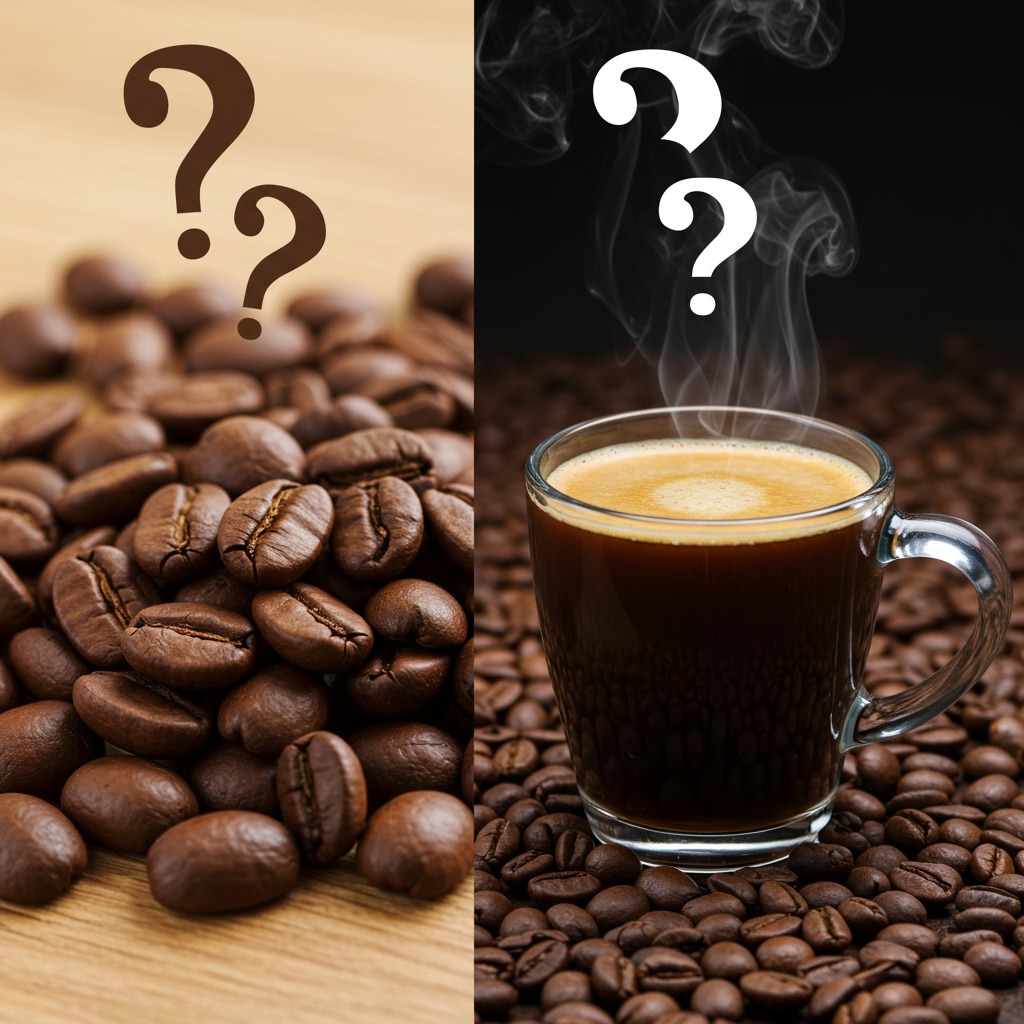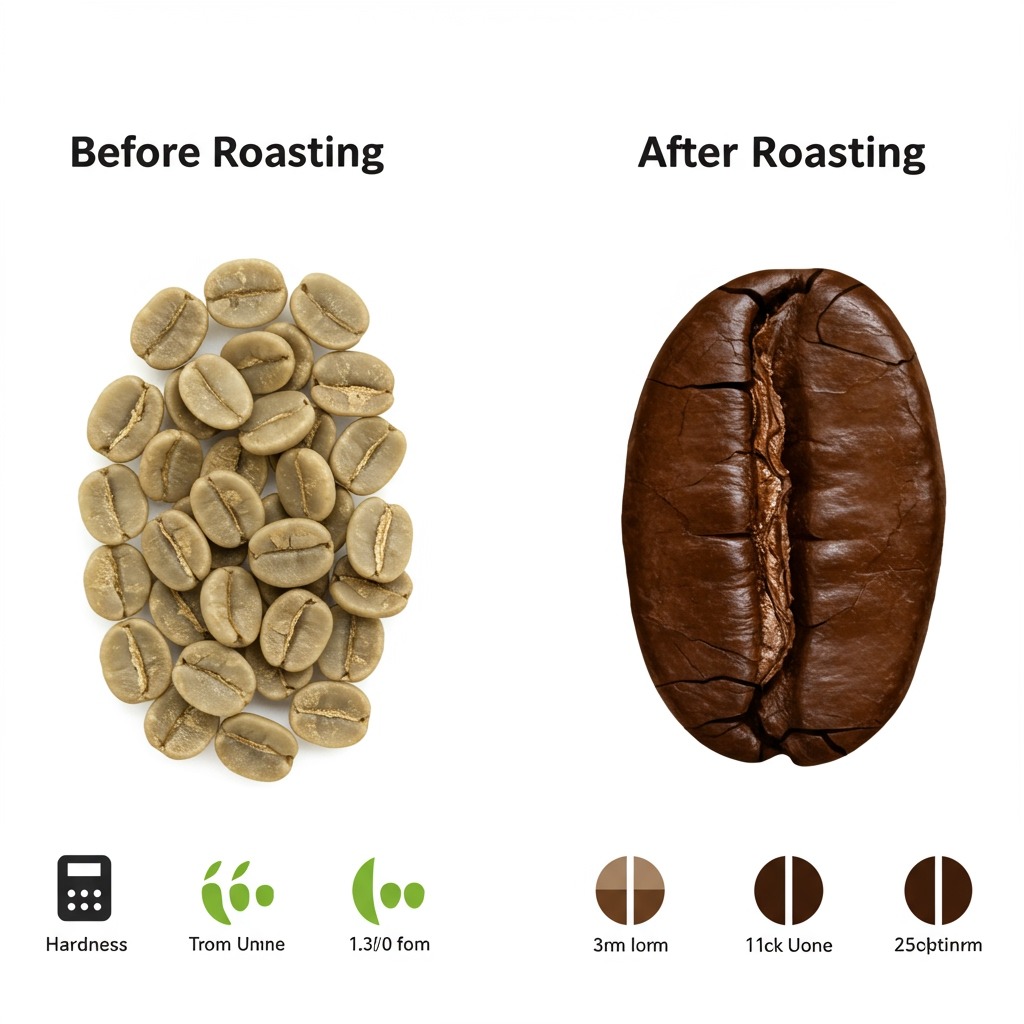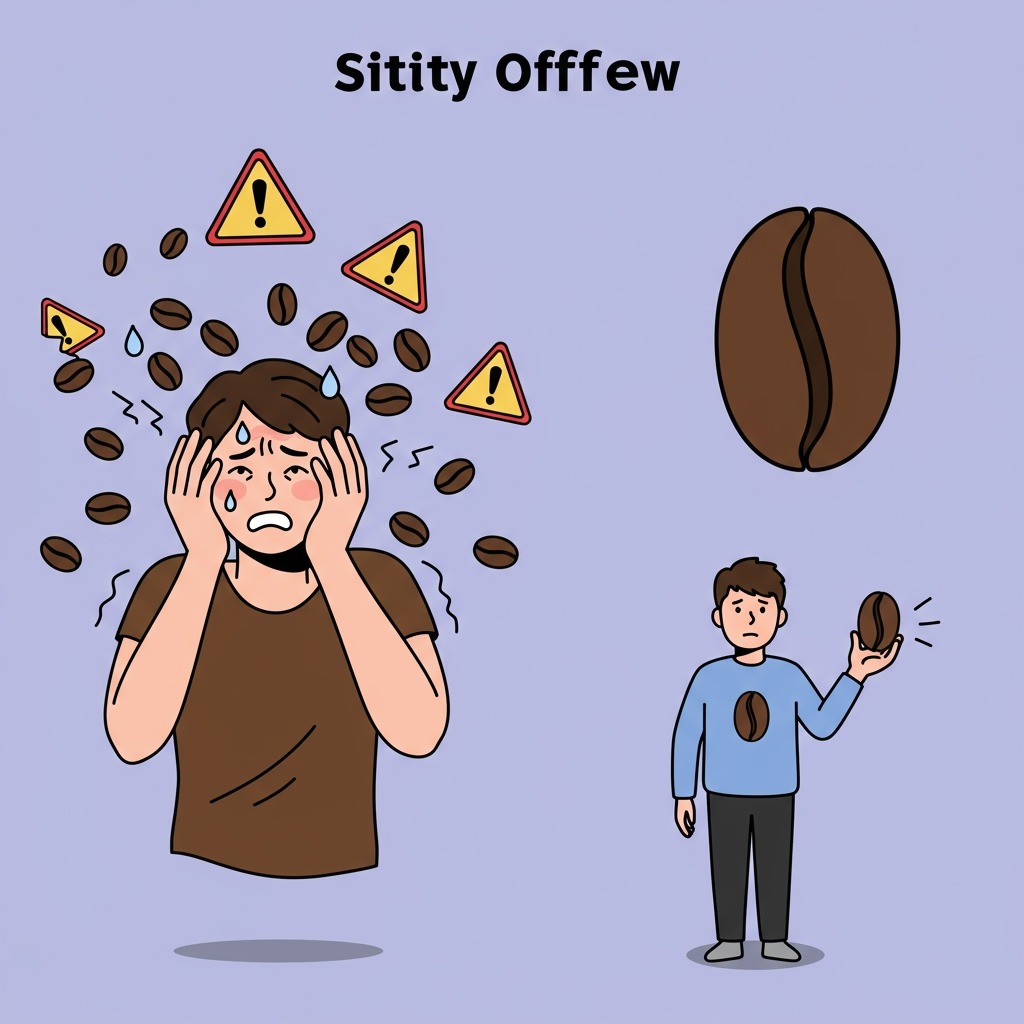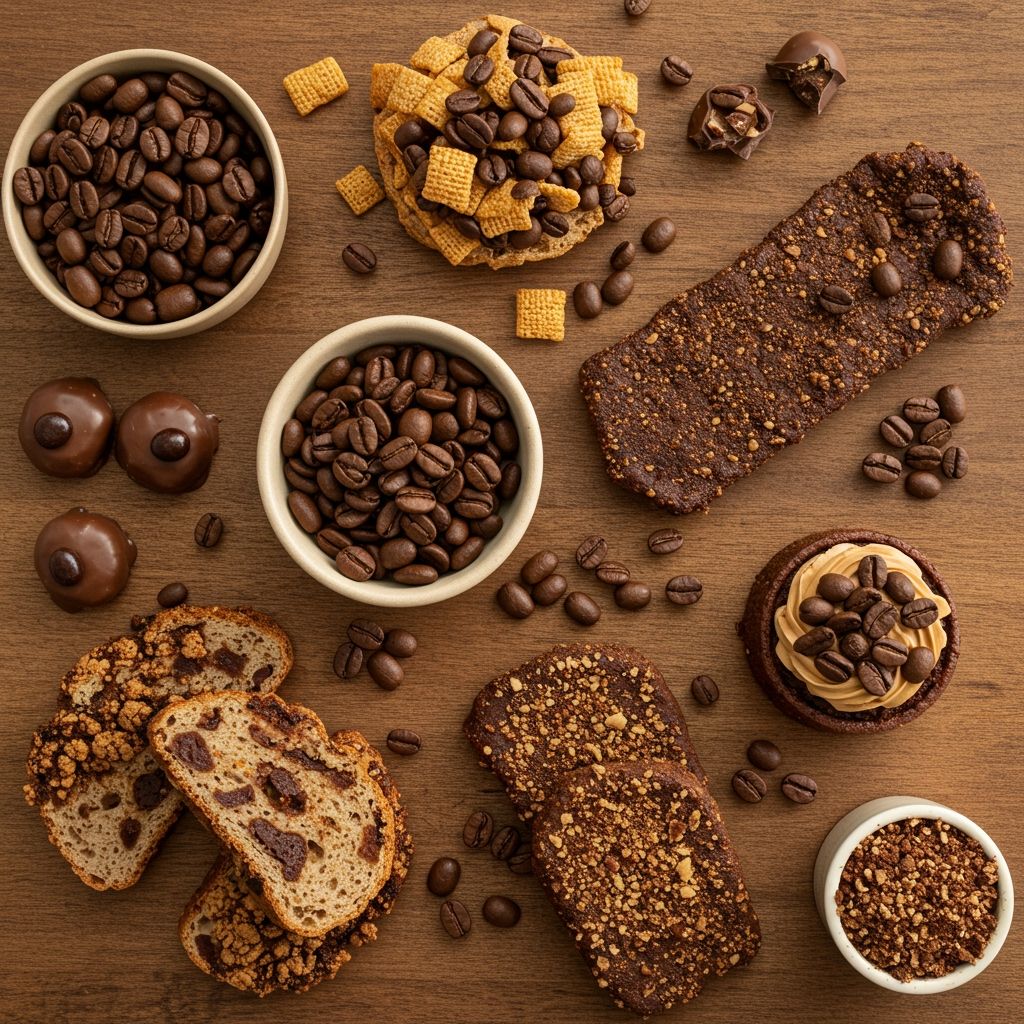That aromatic bag of coffee beans sitting on your kitchen counter – admit it, you’ve probably been tempted to just pop one in your mouth. Is it a secret energy hack, a quirky foodie adventure, or just a plain bad idea? We brew them, we grind them, we cherish the rich liquid they produce, but the question lingers for many: can you eat coffee beans whole?
You’re not alone in wondering! The idea of munching on coffee beans might seem unusual, but it’s a topic buzzing with curiosity. This article will dive deep into whether it’s safe, explore the potential nutritional perks, uncover the risks, compare it to your daily cup of joe, and even suggest some surprisingly tasty ways to enjoy them – if you choose to. So, let’s get to the core of the bean.

The Straight Answer: Yes, You Can Eat Coffee Beans!
Let’s clear this up right away: Yes, coffee beans are edible. Both green (raw) coffee beans and, more commonly, roasted coffee beans can be consumed whole. In fact, chocolate-covered coffee beans are a popular confection found in many stores, enjoyed for their intense flavor and caffeine kick.
However, just because you can eat them doesn’t mean it’s always the best idea or that you can eat them without limit. The experience and effects are quite different from drinking brewed coffee. The flavor is far more intense, the texture is obviously a factor, and the way your body processes the compounds, especially caffeine, can vary.
Green vs. Roasted: What’s the Difference for Eating?
The journey of a coffee bean from plant to cup (or mouth!) involves a significant transformation, primarily through roasting. This process dramatically changes the bean’s characteristics.
Green Coffee Beans (Raw)
Before roasting, coffee beans are small, dense, and green.
- Taste: If you were to bite into a raw green coffee bean, you’d find the taste quite different from your morning brew. They are often described as woody, acidic, and having grassy or vegetal notes. For most people, this isn’t a particularly palatable flavor.
- Texture: Green coffee beans are extremely hard and can be quite difficult to chew.
- Nutritional Profile: They are notably higher in a group of antioxidants called chlorogenic acids, which have been linked to various health benefits. Some caffeine is present.
- Eating Experience: Generally, not a pleasant snack due to their hardness and taste.
Roasted Coffee Beans
Roasting is where the magic happens, unlocking the familiar aromas and flavors we associate with coffee.
- Taste: Roasting develops hundreds of aromatic compounds, resulting in complex flavors that can range from nutty and chocolaty to fruity and floral, depending on the bean’s origin and the roast level (light, medium, dark).
- Texture: The roasting process makes beans more brittle and porous, giving them a crunchy texture that’s much easier and more enjoyable to eat compared to green beans.
- Nutritional Profile: While roasting slightly reduces the chlorogenic acid content, it also creates other beneficial antioxidant compounds. Caffeine remains readily available and concentrated. One compound that forms during roasting is acrylamide, which we’ll discuss in the risks section.
- Eating Experience: This is the form you’ll most likely encounter for eating, offering that intense coffee flavor and a satisfying crunch.

Potential Benefits of Eating Coffee Beans
Why would someone choose to eat coffee beans instead of just drinking coffee? There are a few potential upsides:
- A Concentrated Source of Caffeine: This is the most obvious benefit. Eating whole coffee beans delivers a potent dose of caffeine. Some people find that the caffeine absorption might feel faster or more direct than when drinking brewed coffee, leading to a quick energy boost and improved focus.
- Rich in Antioxidants: Coffee beans are packed with antioxidants, including chlorogenic acids (more so in green beans, but still present in roasted) and other polyphenols. These compounds help combat oxidative stress in your body by neutralizing harmful free radicals, which are linked to various chronic diseases and aging.
- A Surprising Source of Fiber: When you eat the whole bean, you’re consuming dietary fiber. Brewed coffee contains virtually no fiber, as it’s left behind in the grounds. Fiber is essential for digestive health, helping with regularity and potentially contributing to feelings of fullness.
- Convenience and Portability: For a quick, no-fuss caffeine hit, coffee beans are incredibly convenient. They require no preparation, are easy to carry, and can be a discreet way to get a pick-me-up when you don’t have time or access to brewed coffee.
Potential Risks and Downsides of Eating Coffee Beans
While there are benefits, it’s crucial to be aware of the potential downsides, especially if you overindulge.
- Caffeine Overload & Side Effects: This is the primary concern. Because caffeine is so concentrated in whole beans, it’s very easy to consume a large amount quickly without realizing it. An average roasted coffee bean contains around 5-10 mg of caffeine, depending on the bean type and size. Eating just a small handful could equate to several cups of coffee.
- Symptoms of too much caffeine include: Jitters, anxiety, nervousness, rapid heartbeat (palpitations), insomnia or sleep disturbances, headaches, dizziness, and an upset stomach.
- Moderation is absolutely key. What constitutes “too many” varies greatly depending on individual tolerance, body weight, and overall caffeine consumption from other sources.
- Digestive Issues:
- Heartburn/Acid Reflux: Coffee is naturally acidic, and some compounds in coffee beans can relax the lower esophageal sphincter, potentially leading to or worsening heartburn and acid reflux in sensitive individuals.
- Stomach Upset: The concentrated compounds and fiber in whole beans can cause stomach upset, bloating, gas, or even have a laxative effect for some people, especially if consumed in larger quantities.
- Acrylamide Content (in Roasted Beans): Acrylamide is a chemical that can form in some foods during high-temperature cooking processes like frying, roasting, and1 baking – and coffee roasting is one of them. It’s classified as a “probable human carcinogen” by some health organizations when consumed in very high amounts.
- It’s important to note that the levels of acrylamide in coffee (both brewed and beans) are generally low and part of a wide range of foods that contain it. For most people, the benefits of coffee consumption are thought to outweigh the potential risks from acrylamide. However, if you plan on eating a large quantity of roasted coffee beans regularly, it’s a factor to be aware of. You can learn more about acrylamide from resources like the FDA’s Acrylamide Questions and Answers page.
- Sleep Disruption: Caffeine has a well-known stimulating effect and a relatively long half-life (the time it takes for your body to eliminate half of it). Eating coffee beans, especially later in the day or evening, can significantly interfere with your ability to fall asleep and the quality of your sleep.
- Dental Health:
- The acidity of coffee beans can contribute to enamel erosion over time if consumed frequently.
- Like brewed coffee, eating coffee beans can also lead to staining of your teeth.
- Interactions with Medications/Conditions: Individuals with certain heart conditions, anxiety disorders, gastrointestinal conditions like IBS, or those who are pregnant should be particularly cautious with caffeine intake from any source, including whole beans. Caffeine can also interact with certain medications. If you have any health concerns, it’s always best to consult your doctor.
How Does Eating Beans Compare to Drinking Coffee?
You might be wondering how munching on beans stacks up against sipping your favorite brew.
- Caffeine Absorption & Intensity: When you eat coffee beans, caffeine is absorbed through the lining of your mouth and digestive system. Some anecdotal reports suggest this leads to a faster onset and potentially a more intense caffeine “hit” compared to drinking coffee, where absorption is primarily through the digestive tract after brewing. However, this can vary from person to person.
- Nutrient Profile: Eating the whole bean means you ingest everything – including the fiber and certain oils and compounds that might be largely left behind in the grounds during brewing. While brewed coffee still contains many beneficial antioxidants, eating the bean provides a different, more complete nutritional package from the source.
- Flavor Experience: This is a major difference. Brewed coffee offers a nuanced, diluted (compared to the bean) flavor profile. Eating a roasted coffee bean delivers an extremely concentrated burst of coffee flavor, often with a pronounced bitterness alongside the characteristic roast notes. The texture – the crunch of the bean – is also a significant part of the experience.

If You Choose to Eat Coffee Beans: Tips for Safe Enjoyment
If you’re curious and want to try eating coffee beans, here are some tips to do so more safely and enjoyably:
- Start Small & Practice Moderation: This is the most important tip. Don’t start by eating a large handful. Try one or two beans and see how your body reacts over the next few hours. Pay attention to any signs of jitters, stomach upset, or other side effects. A general guideline often suggested is not to exceed the number of beans you’d typically use for one or two cups of strong coffee (roughly 10-20 beans, depending on size and your coffee strength preference), but even this might be too much for some.
- Choose Quality Beans: Just like with brewing, the quality of the bean matters. Freshly roasted, good-quality beans will generally taste much better and offer a more pleasant experience than old, stale, or low-grade beans.
- Consider Chocolate-Covered Coffee Beans: For many, this is the most palatable way to eat coffee beans. The sweetness of the chocolate helps to balance the bitterness of the bean, and the texture combination can be quite appealing. However, remember that these also contain caffeine and added sugar, so moderation is still key.
- Be Aware of Your Total Caffeine Intake: If you’re eating coffee beans, make sure to factor that into your total daily caffeine consumption from all sources (brewed coffee, tea, energy drinks, soda, chocolate, etc.). The FDA suggests that up to 400 milligrams of caffeine a day is generally safe for most healthy adults.
- Listen to Your Body: Everyone’s tolerance to caffeine and the compounds in coffee beans is different. If you experience any negative side effects, it’s a sign to cut back or avoid eating them altogether.
Creative Ways to Eat Coffee Beans (Beyond Just Popping Them Plain)
If plain roasted beans aren’t your thing, but you’re still curious, here are a few ideas:
- Chocolate-Covered Coffee Beans: The classic, as mentioned. Dark, milk, or white chocolate all work well.
- Crushed in Trail Mix: Add a few coarsely crushed roasted coffee beans to your favorite trail mix for an extra crunch and caffeine kick.
- Ground in Spice Rubs: Finely ground coffee beans can add a deep, smoky, and complex flavor to spice rubs for meats like beef brisket, steak, or pork.
- Incorporated into Baked Goods: Sparingly, finely ground or crushed coffee beans can be added to cookies, brownies, or energy bar recipes for a coffee flavor boost.
- As a Crunchy Topping: Sprinkle crushed coffee beans over desserts like ice cream, yogurt, or even oatmeal for a textural contrast and flavor punch.

FAQ: Your Coffee Bean Eating Questions
Q1: How many coffee beans can you eat a day?
A: There’s no set “safe” number, as it heavily depends on your individual caffeine tolerance, the type of bean, and your overall diet. However, experts advise strict moderation. Start with only a few (1-5) to see how you react. Consuming more than 20-30 beans could deliver a very high dose of caffeine for many people.
Q2: Is eating coffee beans addictive?
A: Caffeine itself is a stimulant and can be habit-forming, leading to physical dependence. Eating coffee beans is just another method of consuming caffeine. If you consume enough caffeine regularly through eating beans, you could develop a dependence.
Q3: Will eating coffee beans help you lose weight?
A: While caffeine can slightly boost metabolism and is found in some weight loss supplements, there’s no direct evidence that eating coffee beans is an effective strategy for weight loss. A balanced diet and regular exercise are key.
Q4: Are green coffee beans better for you to eat than roasted ones?
A: Green coffee beans are higher in certain antioxidants like chlorogenic acids. However, their taste is generally considered unpleasant, and they are very hard to chew. Roasted beans lose some chlorogenic acids but develop other beneficial compounds and are far more palatable. There isn’t a clear “better” for eating whole; it depends on what you’re looking for, but roasted beans are the practical choice for consumption.
Q5: Can kids eat coffee beans?
A: It’s generally not recommended for children to consume coffee beans or significant amounts of caffeine. Children are more sensitive to caffeine’s effects, and it can cause hyperactivity, anxiety, sleep problems, and other issues.
The Final Bean: To Eat or Not to Eat?
So, can you eat coffee beans? Yes, you absolutely can. They offer a concentrated dose of caffeine, antioxidants, and fiber. However, this unique way of consuming coffee comes with the need for awareness and moderation due to the potential for caffeine overload and digestive upset.
Ultimately, whether you choose to eat coffee beans is a personal decision. If you’re curious, start with a very small amount of roasted beans, pay attention to how your body feels, and enjoy them as an occasional, interesting treat rather than a primary source of caffeine. Understanding the nuances of eating coffee beans is about balancing that adventurous curiosity with a sensible approach to your well-being.
